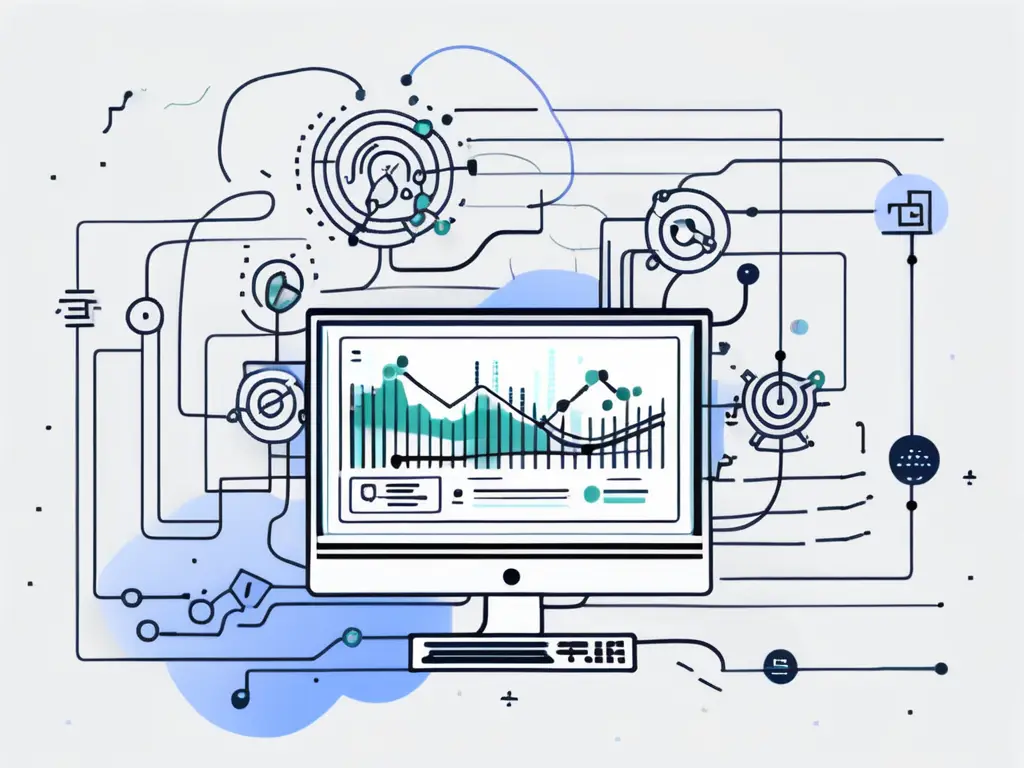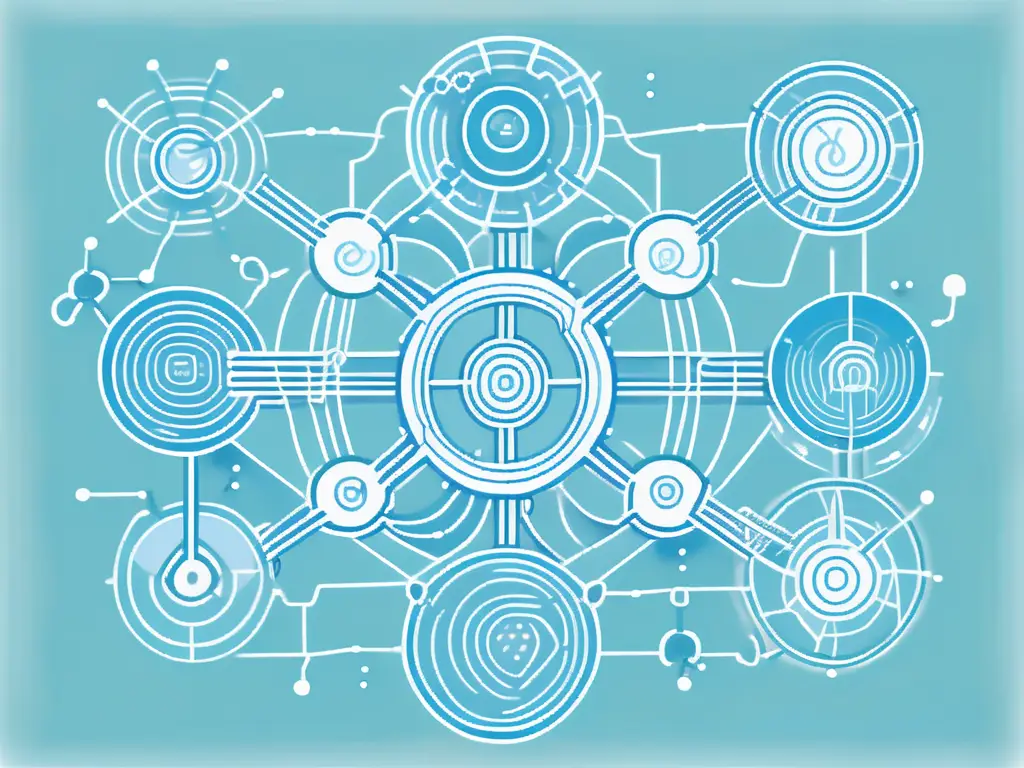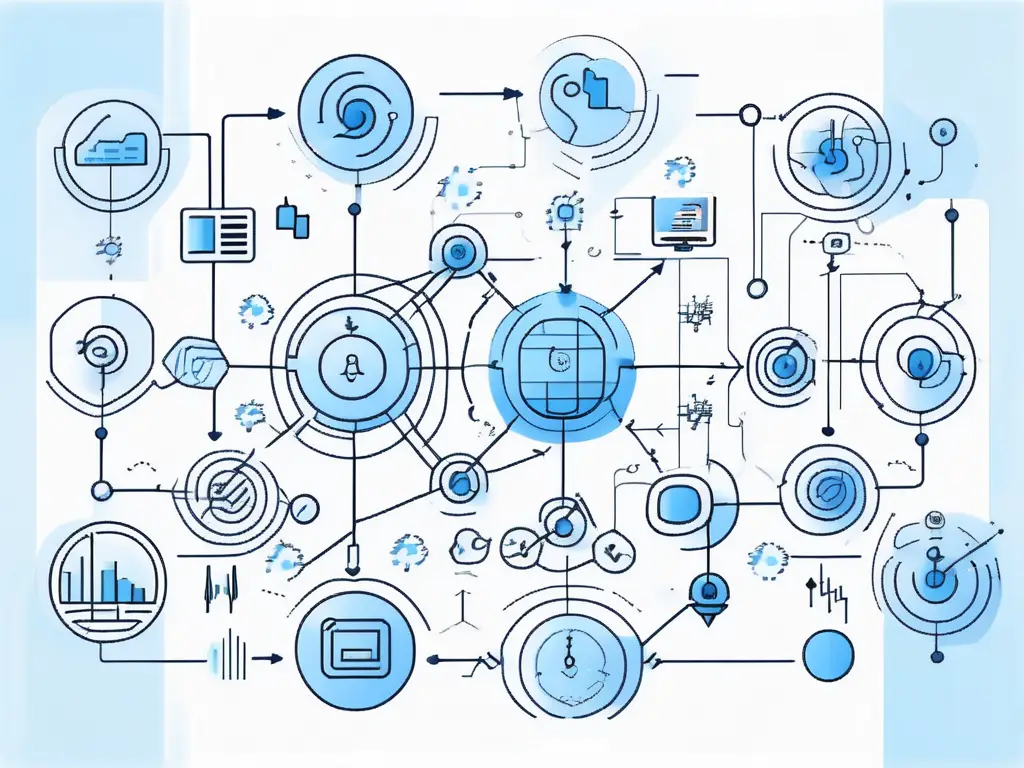Data representation is a fundamental aspect of computer science and information technology. It allows us to store, process, and communicate data in a format that computers can understand. This article will delve into the various ways data can be represented, from the smallest unit of information to more complex data types. So, let’s dive in and explore the fascinating world of data representation!
Understanding Data Representation
The Basics of Data Representation

Before fully grasping the data representation concept, we need to understand the fundamentals. At the heart of data representation are bits – the building blocks of information in computers. Simply put, a bit is a binary data unit with two possible values: 0 or 1. These values might seem insignificant, but when combined, they form the basis of all computerized information.
Delving deeper into data representation, we find that bits are often grouped to form larger data units. For example, a group of 8 bits makes up a byte, representing a single character like ‘A’ or ‘7’. Beyond bytes, multiple bytes can be combined to create even larger units such as kilobytes, megabytes, and gigabytes, which are commonly used to measure storage capacity.
Why Data Representation Matters
Data representation is crucial in numerous areas, such as computing, networking, and storage. It allows us to manipulate and process information efficiently, ensuring that different systems can transmit and understand data accurately. Without a proper understanding of data representation, we couldn’t harness the full power of computers and the digital world.
Data representation is essential for tasks like image processing, where pixels are represented by binary values to create visual content on screens. In networking, data is transmitted in binary signals through cables or wireless connections, relying on accurate representation to maintain data integrity during transmission. Data compression relies heavily on efficient data representation techniques to reduce file sizes while preserving essential information.
Delving into Bits and Bytes
What are Bits?

To truly appreciate data representation, we must start at the lowest level – the bit. As mentioned earlier, a bit can hold two values: 0 or 1. It’s the fundamental building block of digital information, analogous to a light switch that can be turned on or off. Bits are the foundation upon which all other forms of data representation are built, making them the bedrock of modern computing.
Delving deeper into bits, it’s fascinating to note that “bit” is a portmanteau of “binary digit.” This highlights the binary nature of digital data, where everything is ultimately reduced to combinations of 0s and 1s. Claude Shannon first introduced the concept of bits in his seminal work on information theory, laying the groundwork for the digital revolution that would follow.
The Role of Bytes in Data Representation
While bits are the smallest unit of information, they are often grouped to form larger units called bytes. A byte consists of 8 bits, allowing for a more efficient data representation. Bytes can express a wider range of values, from 0 to 255. Bytes are akin to the bricks in a wall, combining to create a solid structure for data storage and processing.
Bytes play a crucial role in various aspects of computing, including memory allocation, file storage, and data transmission. In modern computer systems, data is typically handled in chunks of bytes, with operations and calculations performed at the byte level for optimal efficiency. Understanding the significance of bytes is essential for grasping the intricacies of data manipulation and processing in the digital realm.
The Power of Words in Data Representation
Word Data Type: An Overview
Now that we understand the basics of bits and bytes, let’s explore the role of words in data representation. In computer science, a word is a fixed-size data unit that can vary depending on the system’s architecture. It represents the largest natural data size that the hardware can handle efficiently. Words are like vehicles transporting data between different parts of a computer, enabling complex operations and calculations to be performed.
The Impact of Words on Data Representation
Words have a significant impact on data representation. They allow us to store and manipulate larger amounts of information, providing higher precision and accuracy. With words, we can represent numbers, characters, symbols, and even entire sentences. They allow us to process complex data types, opening up possibilities in artificial intelligence, natural language processing, and data analytics.
Furthermore, the size of a word in a system is crucial in determining the maximum value that can be represented. For example, in a system with a 16-bit word size, the maximum integer value that can be stored is 65,535. However, in a system with a 32-bit word size, this value increases significantly to 4,294,967,295. The choice of word size impacts the efficiency and capabilities of a computer system, influencing its performance in various tasks.
In addition to their role in data representation, words are vital in memory management and addressing within a computer system. When a program is executed, instructions and data are stored in memory locations, each identified by a unique address. Words represent these memory addresses, allowing the system to access and retrieve information efficiently. By organizing data into words and utilizing them for memory addressing, computers can operate seamlessly, executing tasks quickly and accurately.
Beyond Bits, Bytes, and Words
Exploring Other Data Types

While bits, bytes, and words form the foundation of data representation, a vast array of other data types can be used to represent different kinds of information. These data types range from integers and floating-point numbers to strings and arrays. Each data type has unique characteristics and applications, allowing us to represent and process data in diverse ways.
One fascinating data type gaining prominence is the “Boolean” data type. Booleans are a simple data type with only one of two values: true or false. They are incredibly useful for representing logical values and conditions in programming. By utilizing Booleans, programmers can make decisions in their code based on whether a condition is true or false, enabling the creation of complex and dynamic algorithms.
Another intriguing data type is the “Struct” data type. Structs allow programmers to create custom data structures by grouping variables of different data types under a single name. This can be particularly beneficial when working with complex data that needs to be organized in a specific way. Structs provide a way to encapsulate related data and simplify information management within a program.
The Future of Data Representation
Data representation constantly evolves, driven by technological advancements and the ever-increasing demands for more efficient and effective data processing. As we delve deeper into the digital age, we can expect new data representation techniques to emerge, enabling us to handle even larger volumes of data and perform complex computations at lightning speed. The future of data representation holds endless possibilities.
Choosing the Right Data Representation
Factors to Consider
Several factors come into play when choosing the right data representation. We must consider the type of data we are working with, its size, the operations we need to perform, and the constraints imposed by the hardware and software systems we use. By carefully considering these factors, we can select the most suitable data representation that balances efficiency and accuracy.
One crucial aspect to consider when selecting a data representation is the scalability of the chosen format. Scalability refers to the ability of the data representation to handle an increasing amount of data without compromising performance. It is essential to choose a representation that can scale effectively as the volume of data grows, ensuring that the system remains efficient and responsive.
Another factor to consider is the ease of data manipulation and analysis. The chosen data representation should facilitate seamless data processing, manipulation, and analysis. Whether it involves complex mathematical operations or simple data filtering, the representation should enable efficient data handling to derive meaningful insights and make informed decisions.
The Role of Context in Data Representation
Context is also crucial in data representation. How data is represented can vary depending on the specific context in which it is used. For example, representing a temperature value might require a different data type when used in a scientific experiment compared to when used in a weather application. The context influences how we perceive and interpret data, emphasizing the significance of choosing the appropriate representation.
Considering the cultural and societal context in which data is interpreted is essential. Different cultures may interpret symbols or data formats differently, leading to potential miscommunications or misunderstandings. By considering the cultural context, data representations can be tailored to ensure clarity and accuracy in communication across diverse audiences.
Conclusion
Data representation is both an art and a science. It combines logical thinking, mathematical precision, and creative problem-solving to transform raw data into meaningful information. The ability to represent data accurately and efficiently is a skill that is essential in today’s digital world. By understanding how data can be represented, we can unlock the full potential of computers and harness the power of data to drive innovation and progress.
So, the next time you interact with a computer or mobile device, take a moment to appreciate the intricate world of data representation beneath the surface. It’s a fascinating realm where seemingly insignificant bits and bytes combine to form a tapestry of information that powers our modern lives. Explore, experiment, and embrace the beauty of data representation – it’s the language of the digital age!
As we’ve explored the intricacies of data representation, it’s clear that the digital landscape is complex and ever-evolving. In this realm, cybersecurity is not just a necessity but an art that requires expertise and precision. Blue Goat Cyber, a leader in cybersecurity excellence, offers a suite of B2B services designed to navigate these complexities easily. Our veteran-owned company specializes in medical device cybersecurity, penetration testing, and compliance, ensuring that your data is well-represented and thoroughly protected. Don’t let cyber threats undermine the integrity of your data. Contact us today for cybersecurity help and partner with Blue Goat Cyber to secure your digital assets and empower your business to thrive confidently in the digital age.


